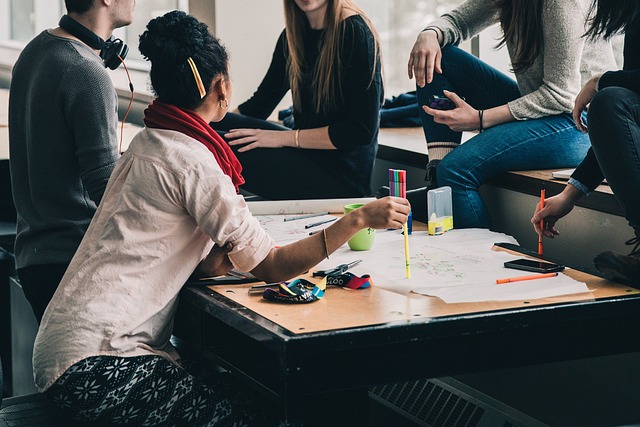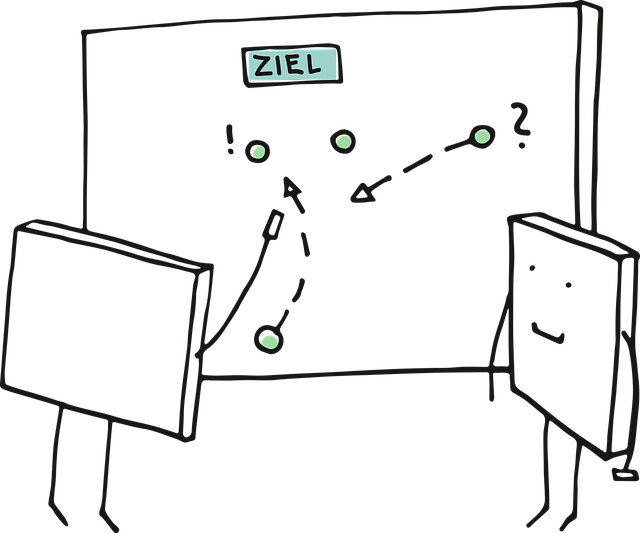Who doesn’t love a good brainstorming session? The excitement of generating ideas, the sparks of creativity flying around the room – it’s a sure-fire way to fuel innovation and problem-solving. But here’s the thing: a productive brainstorming session doesn’t just happen by chance. It all starts with a well-crafted meeting agenda. Yes, you heard it right. A carefully planned agenda sets the stage for a successful brainstorming meeting, helping channel everyone’s thoughts in the right direction and maximizing the potential of your team’s collective genius. In this article, we’ll delve into some expert tips and techniques that will help you curate an agenda that unleashes the power of productive brainstorming sessions. So, let’s dive right in and discover the secrets to crafting an agenda that will take your brainstorming meetings from ho-hum to aha! moments.
Contents
- 1. Setting the Stage: Preparing for a Successful Brainstorming Meeting
- 2. Clarifying Objectives: Defining the Purpose and Goals of Your Brainstorming Session
- 3. Creating a Safe and Supportive Environment: Encouraging Collaboration and Open-Mindedness
- 4. The Power of Diverse Perspectives: Inviting Different Voices to the Table
- 5. Facilitation Techniques: Guiding the Flow of Ideas and Maximizing Participation
- 6. Using Effective Brainstorming Tools: Leveraging Technology and Visual Aids
- 7. Time Management Strategies: Balancing Efficiency and Creativity
- 8. Post-Meeting Action Plan: Transforming Brainstormed Ideas into Tangible Results
- Frequently Asked Questions
- In Retrospect
1. Setting the Stage: Preparing for a Successful Brainstorming Meeting
Before diving into a brainstorming session, it’s crucial to lay the groundwork for success. This initial stage sets the tone and ensures that everyone is on the same page, paving the way for a fruitful and productive meeting. Here are a few key steps to take in order to prepare for a successful brainstorming session:
- Establish clear objectives: Define the specific goals and desired outcomes of the brainstorming session. Clearly communicate these objectives to all participants in advance, so everyone understands what needs to be achieved.
- Identify the right participants: Inviting the right mix of individuals with diverse backgrounds and expertise is crucial for generating a wide range of ideas. Consider including team members from various departments or external experts who can offer unique perspectives.
- Gather background information: To ensure fruitful discussions, share relevant information with participants prior to the meeting. This can include market research, customer insights, or any other data relevant to the topic at hand. By providing context, participants can come prepared and ready to contribute.
By taking these preparatory steps, you’ll set the stage for a successful brainstorming meeting. Remember, effective brainstorming requires a well-thought-out foundation that promotes collaboration and creativity. With the right objectives, participants, and information in place, you’re ready to kick-start an inspiring session that will produce innovative ideas.
2. Clarifying Objectives: Defining the Purpose and Goals of Your Brainstorming Session
When it comes to brainstorming, it’s crucial to have a clear understanding of the purpose and goals of your session. Clarifying objectives ensures that everyone involved is on the same page and working towards a common goal. Here are a few key steps to help you define the purpose and goals of your brainstorming session:
- Identify the problem or challenge: Start by clearly defining the problem or challenge that you want to address in your brainstorming session. This will provide a framework for the discussion and focus your efforts.
- Set specific goals: Determine what you hope to achieve as a result of your brainstorming session. Are you looking for new ideas, solutions to a particular issue, or innovative approaches? Clearly define your goals to guide the process.
- Consider the desired outcome: Think about the desired outcome of your session. Are you aiming for a single solution, a shortlist of options, or a range of ideas to explore further? Defining the desired outcome will help you evaluate the success of your brainstorming session.
By clarifying objectives and defining the purpose and goals of your brainstorming session, you create a solid foundation for productive and focused discussions. This process ensures that everyone involved understands the objectives and can contribute effectively. It also provides a structure to guide the session, making it easier to assess the outcomes and measure the success of your brainstorming efforts.
3. Creating a Safe and Supportive Environment: Encouraging Collaboration and Open-Mindedness
Creating a safe and supportive environment is crucial in any setting, especially when it comes to fostering collaboration and open-mindedness. Here are some key strategies that can help promote these values in your community:
1. Emphasize active listening: Encourage individuals to truly listen to one another, without interrupting or formulating responses in their minds. This simple act of giving undivided attention not only shows respect but also allows for a better understanding of others’ perspectives.
2. Foster empathy and understanding: Creating an atmosphere of empathy helps individuals appreciate different points of view, even when they may not personally agree. Encourage open conversations that promote empathy by asking participants to share personal experiences or stories that relate to the topic at hand.
3. Set clear expectations: Establish guidelines that emphasize the importance of collaboration and open-mindedness. Clearly communicate these expectations to ensure everyone understands what is expected of them. This can help create a safe space where individuals feel comfortable expressing their thoughts and ideas without fear of judgment.
4. Encourage diversity and inclusivity: Actively seek out diverse viewpoints and experiences to enrich discussions and decision-making processes. Let individuals know that their unique perspectives are valued and that inclusivity is a priority in your community.
5. Provide constructive feedback: Encourage community members to provide feedback that is both constructive and respectful. Emphasize the importance of focusing on the ideas presented rather than attacking the individual presenting them. Constructive feedback fosters growth and encourages individuals to continue contributing to the collaborative environment.
6. Celebrate achievements and milestones: Recognize and celebrate the accomplishments of individuals who contribute positively to the community. This not only boosts morale but also encourages others to actively participate and engage in open-minded and collaborative discussions.
By implementing these strategies, you can create a safe and supportive environment that encourages collaboration and open-mindedness, fostering a sense of belonging and growth within your community. Remember, fostering these values takes ongoing effort, but the rewards are well worth it.
4. The Power of Diverse Perspectives: Inviting Different Voices to the Table
In embracing the power of diverse perspectives, we open ourselves up to a world of endless possibilities. By inviting individuals from different backgrounds, cultures, and experiences to the table, we create an environment that encourages fresh ideas, innovation, and collaboration. The richness that comes with diversity is like a tapestry woven with threads of various colors, each representing a unique perspective that contributes to the whole.
When we include diverse voices, we benefit from a multitude of viewpoints that challenge the status quo and push us beyond our comfort zones. These varied perspectives provide an opportunity to see problems from new angles, leading to deeper insights and more creative solutions. By fostering an inclusive environment, we create a space where every person feels valued and empowered, bringing their authentic selves to the table and sharing their expertise.
- Enhanced problem-solving: Diverse perspectives offer alternative ways of approaching challenges, leading to more comprehensive and effective problem-solving.
- Cultural competency: Embracing different voices cultivates cultural sensitivity, understanding, and empathy, creating a more inclusive and harmonious community.
- Innovation and creativity: By encouraging diverse perspectives, we open ourselves up to new ideas, inspiring innovation, and driving creativity to new heights.
5. Facilitation Techniques: Guiding the Flow of Ideas and Maximizing Participation
Successful facilitation is essential for productive and engaging group discussions. By implementing various techniques, facilitators can ensure a smooth flow of ideas and encourage maximum participation from all participants. Here are some effective techniques that can guide the flow of ideas and enhance overall collaboration:
- Active Listening: One of the key roles of a facilitator is to attentively listen to participants. Remaining fully present and actively listening to each person’s contributions can create a safe and supportive environment, promoting open communication and the exchange of ideas.
- Creating a Structured Agenda: To maximize participation, it is crucial to have a well-defined agenda. Organizing discussions into clear sections or topics helps participants understand the purpose and direction of the conversation, ensuring that everyone has the opportunity to contribute effectively.
- Encouraging Equal Participation: Facilitators should strive to create an inclusive environment where all participants feel comfortable sharing their thoughts. By encouraging those who are less vocal to contribute, or by using techniques like round-robin style discussions, individuals who might otherwise remain silent can be encouraged to participate actively.
Continuously adapting and employing these facilitation techniques not only helps guide the flow of ideas but also fosters a collaborative atmosphere. A skilled facilitator understands the importance of encouraging diverse perspectives, managing differing opinions diplomatically, and maintaining a positive and constructive environment throughout the discussion. Employing these strategies ensures that a wide range of ideas are shared, leading to innovative solutions and increased engagement among participants.
6. Using Effective Brainstorming Tools: Leveraging Technology and Visual Aids
When it comes to brainstorming, technology and visual aids can be powerful tools that help boost creativity and collaboration. In today’s digital age, there are a plethora of effective brainstorming tools available, each designed to aid in idea generation, organization, and visualization. These advanced tools not only save time but also enhance the brainstorming process by creating an interactive and immersive experience.
One popular technology-based brainstorming tool is mind mapping software. These intuitive applications allow users to create visual diagrams that represent their ideas and their relationships. By using different colors, shapes, and connecting lines, individuals or teams can easily map out their thoughts, making it easier to see connections and identify patterns. Additionally, mind mapping tools often offer collaboration features, where multiple users can contribute and edit the mind map simultaneously, promoting teamwork and collective problem-solving. Some notable examples of mind mapping software include Lucidchart, Miro, and XMind.
- Interactive whiteboards provide another effective brainstorming tool that leverages technology and visual aids. These digital screens allow participants to write, draw, and present ideas in real-time. With features like virtual sticky notes and the ability to integrate multimedia content, interactive whiteboards facilitate dynamic brainstorming sessions and foster engagement among team members. Moreover, these tools often offer the option to save and share the ideas generated during the session, ensuring that nothing valuable is lost or forgotten.
- Virtual reality (VR) technology has also found its way into the realm of brainstorming tools. By immersing participants in realistic virtual environments, VR enables them to explore new perspectives and ideas. This innovative tool can spark creativity by simulating different scenarios or environments, offering a unique and immersive way to generate ideas. Additionally, using VR for brainstorming allows remote teams to collaborate as if they were in the same physical space, eliminating geographical boundaries and facilitating effective brainstorming regardless of location.
7. Time Management Strategies: Balancing Efficiency and Creativity
When it comes to managing your time effectively, striking a balance between efficiency and creativity can be a challenging task. However, with the right strategies in place, you can maximize productivity while fostering your creative thinking. Here are some effective time management tips to help you achieve this delicate equilibrium:
- Set clear goals: Start by defining your objectives and breaking them down into smaller, manageable tasks. This will provide you with a clear roadmap and prevent you from getting overwhelmed.
- Create a schedule: Plan your day in advance, allocating specific time slots to different activities. Prioritize your most important and time-consuming tasks, and ensure you set aside dedicated time for creative brainstorming.
- Utilize time blocking: Dividing your day into blocks of time for different activities can help you optimize your efficiency and creativity. Dedicate uninterrupted blocks solely to creative tasks, while using shorter blocks for more routine tasks.
- Eliminate distractions: Identify and eliminate the common distractions that hinder your focus and creativity. Silence your phone, close unnecessary tabs on your computer, and create a distraction-free environment that promotes deep concentration.
- Embrace breaks: Taking regular breaks throughout your workday is essential for recharging your brain and maintaining a balance between efficiency and creative thinking. Use these breaks to relax, meditate, or engage in activities that stimulate your creativity.
- Seek inspiration: Exposing yourself to new ideas and experiences can fuel your creativity and prevent burnout. Make time to read books, attend workshops, or connect with like-minded individuals who can inspire and challenge your thinking.
By implementing these effective time management strategies, you can ensure that your days are productive, while still allowing room for your creative thoughts to flourish. Remember to adapt these tips to suit your own unique working style, as everyone’s approach to time management may differ. With practice and consistency, you’ll find the perfect balance between efficiency and creativity, leading to increased success in all areas of your life.
8. Post-Meeting Action Plan: Transforming Brainstormed Ideas into Tangible Results
After a productive brainstorming session, it’s essential to transform those generated ideas into tangible results. To effectively execute your post-meeting action plan, here are a few steps to guide you:
- Review and prioritize: Take some time to go through all the brainstormed ideas and evaluate their feasibility and potential impact. Identify the most promising concepts that align with your project objectives.
- Assign responsibilities: To ensure smooth execution, designate specific team members responsible for each idea or task. This way, everyone knows their role and can focus their efforts accordingly.
- Create an actionable timeline: Set clear deadlines for each task to keep the project on track. Break down the overall action plan into smaller, manageable steps, assigning specific durations to each milestone.
Once you have organized your post-meeting action plan, it’s time to move onto the implementation phase. Here are some additional steps to help you bring those ideas to life:
- Define resources and requirements: Assess the resources, budget, and tools needed to execute each task effectively. Determine any external support or dependencies required and streamline the procurement process accordingly.
- Establish regular check-ins: Maintain open lines of communication with your team to monitor progress and address any challenges that arise during the implementation phase. Schedule regular check-in meetings to ensure everyone stays on the same page.
- Celebrate milestones: Recognize and celebrate the achievements of your team as they reach significant milestones in the action plan. This boosts morale and motivation, fostering a positive work environment.
By following these steps and staying committed to your post-meeting action plan, you’ll efficiently transform the brainstormed ideas into tangible results. Remember, successful execution requires teamwork, effective communication, and consistent dedication. Let’s turn those concepts into reality!
Frequently Asked Questions
Q: What is the importance of having an effective brainstorming meeting agenda?
A: Having an effective brainstorming meeting agenda is crucial for maximizing productivity and ensuring that the session remains focused. It provides a roadmap for achieving desired outcomes and helps keep participants engaged and on track.
Q: How can a well-crafted agenda set the tone for a successful brainstorming meeting?
A: A well-crafted agenda sets the tone by clearly defining the purpose and objectives of the brainstorming session. It enables participants to come prepared, ensuring everyone is aligned and ready to contribute. The agenda acts as a guide, directing the flow of the meeting and emphasizing the importance of generating innovative ideas.
Q: What should be included in a brainstorming meeting agenda?
A: A brainstorming meeting agenda typically includes an introduction, clearly outlined goals, a review of any pre-meeting materials, time allocation for individual idea generation, group discussions, and a conclusion summarizing the outcomes and next steps.
Q: How can setting time limits for each agenda item help in driving productivity?
A: Setting time limits ensures that each agenda item receives the appropriate amount of attention and prevents discussions from running off-track or becoming too lengthy. It encourages participants to stay focused, promotes concise communication, and increases the likelihood of accomplishing meeting objectives within the allocated time.
Q: Should there be room for flexibility within the brainstorming meeting agenda?
A: While having a structured agenda is essential, leaving room for flexibility is equally important. This allows for spontaneous discussions, encourages creative tangents, and fosters collaboration. Flexibility also enables the exploration of ideas that may not fit neatly within predetermined categories or topics.
Q: How can a facilitator encourage active participation during a brainstorming meeting?
A: A facilitator can encourage active participation by creating a safe and inclusive environment where all ideas are valued. They can ask open-ended questions, provide prompts, and challenge participants to think outside the box. Using various brainstorming techniques and involving everyone in the discussion helps ensure that all voices are heard.
Q: What strategies can be employed to keep participants engaged throughout the brainstorming meeting?
A: To keep participants engaged, it is crucial to vary the activities and maintain energy levels. This can be achieved by incorporating interactive exercises, visual aids, or even incorporating technology tools. Additionally, setting clear expectations, actively listening, and acknowledging contributions can help create a positive and motivating atmosphere.
Q: How can a brainstorming meeting agenda contribute to driving successful implementation of ideas?
A: A well-crafted agenda not only focuses on generating ideas but also includes time for evaluating and prioritizing them. By allocating dedicated time for discussing the feasibility, potential challenges, and action steps of each idea, the brainstorming meeting agenda sets the stage for successful implementation. It ensures that viable concepts are thoroughly examined and increases the likelihood of tangible outcomes.
Q: Are there any post-meeting actions related to the agenda that should be taken?
A: Absolutely! After the brainstorming meeting, it is essential to summarize the discussed ideas and distribute minutes or notes to participants. This allows for a collective understanding of the outcomes and ensures accountability for any assigned action items. Following up with the implementation progress and scheduling future meetings or check-ins helps maintain momentum and acknowledges the value of the brainstorming session.
In Retrospect
To maximize the effectiveness of your brainstorming sessions, a well-crafted meeting agenda is vital. Follow our insider tips for success!









